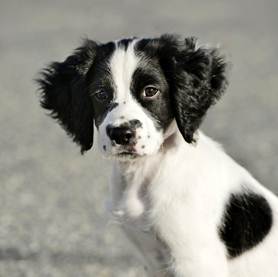 McBaine is a one-year-old Springer Spaniel with floppy ears, a sweet face and maybe, the ability to sniff out cancer.
McBaine is a one-year-old Springer Spaniel with floppy ears, a sweet face and maybe, the ability to sniff out cancer.
This puppy is part of the Penn Vet Working Dog Center at the University of Pennsylvania. The center works on multiple projects, including a trial that is working toward training dogs to help provide early detection for ovarian cancer.
”Cancer cells actually go under changes and they have a change in the way they metabolize nutrients and just different byproducts, those byproducts are then in the tissues,” Cindy Otto, the director of the center told CBS 3 Eyewitness News in Philadelphia. “I know our dogs are life savers.”
Japanese medical researchers have also published findings in the journal “Gut” stating that they have trained a golden retriever to identify certain subtle scent changes that occur in people with colorectal cancer before diagnostic tools can identify it. The dogs can then be trained to convey that information to their owner or a doctor.
These findings are particularly important, as both of these forms of cancer can be very dangerous. Colorectal cancer claims over 50,000 lives annually in the United States and ovarian cancer can have few to no symptoms. Early detection is the key to survival.
Other organizations, like the Fire Fighter Cancer Foundation and CancerDogs.ca have also conducted studies using dogs for potential cancer detection.
Next, researchers aim to isolate the scent molecule that is being emitted in cancer patients and figure out if it can be used in a standardized diagnostic medical test.
Sniffing out cancer is just one use for man’s best friend in medicine. Currently, canines are also being used as a medical alert dog to warn their diabetic handlers of a preeminent low blood sugar episode before the person is even aware of the danger.
As the technology emerges to better understand the chemistry behind this phenomenon, interdisciplinary teams of doctors, lab technicians, veterinarians and other health professionals are working together with their four-legged colleagues to unravel the challenges of detecting cancer and other illnesses.








